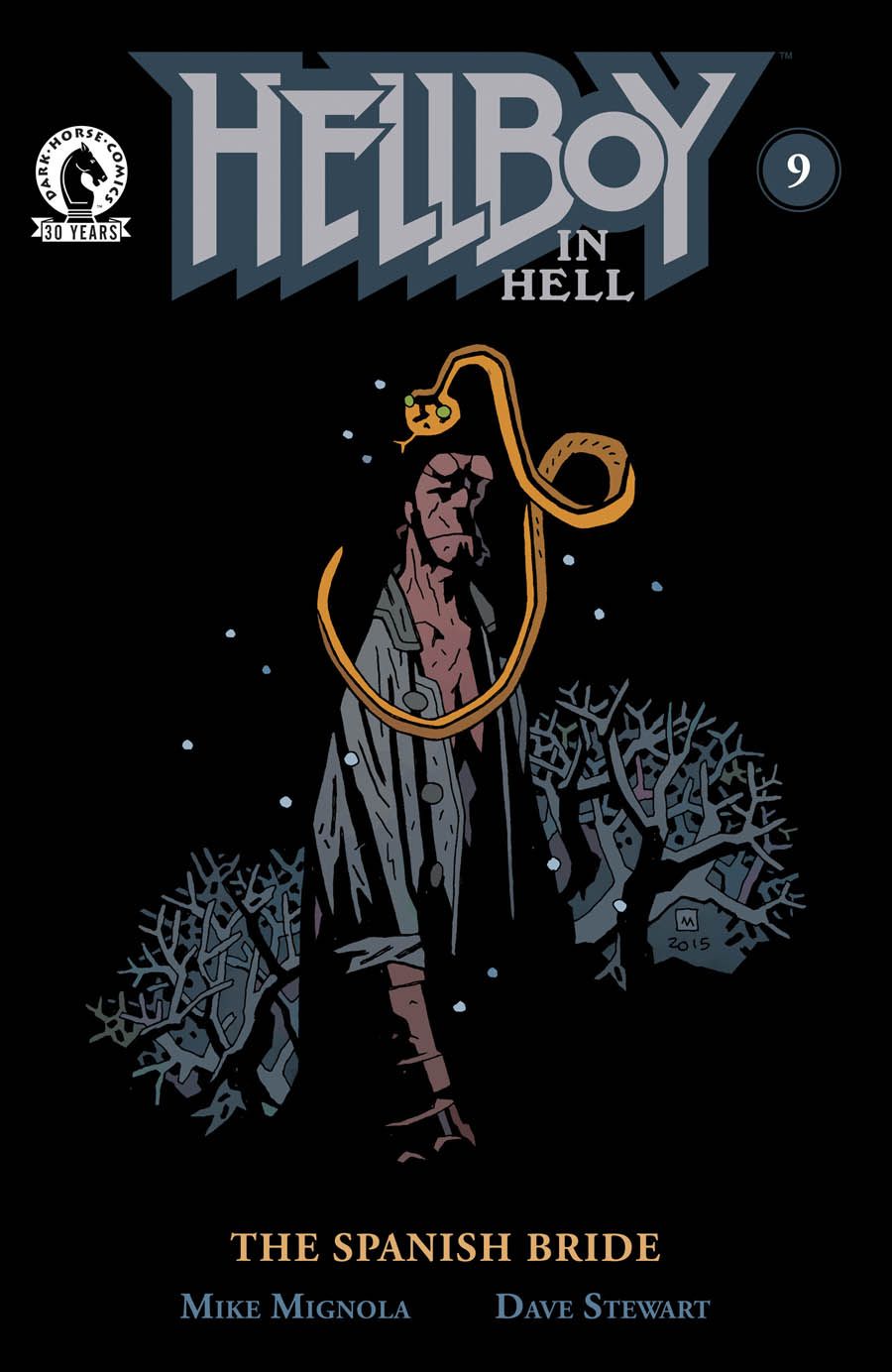With the announcement that the series will conclude with its tenth issue, it was almost a given that "Hellboy in Hell" #9 would begin wrapping things up. Even with that assumption, though, readers may find themselves a little surprised by what Mike Mignola does here. Amidst the flashbacks to Hellboy's time in Mexico, Mignola provides a grim, doom-portending sequence that doesn't bode well for anyone or anything: demons, Hellboy or even Hell itself.
There's something depressing about the first few pages of "Hellboy in Hell" #9, where three demons swap information about how all of the lords of Hell have fallen. It would almost be funny if there wasn't an underlying sadness to their situation. They may be demons, but Mignola makes it very clear that, on some level, it's all they've ever known or can even comprehend; their masters may have all loathed Beelzebub, but serving him is the only option they see.
It's a perfect setup for the rest of the issue, to the point that -- even if Hellboy's path hadn't intersected with the demons -- readers can see what Mignola is trying to convey here. In order to start something new, you have to destroy what came before it; so long as Hell exists in its current configuration, those within its boundaries are doomed to repeat the same sad motions. It takes the return of Hellboy's wife to let what Sir Edward Grey told him fully sink in: this is a chance for Hellboy to start over, but not so long as he lets what came before dictate his actions. Through the words of Hellboy's wife, Mignola provides a lyrical description of how much of Hell has already fallen, and it's as much a litany of what has happened as well as a tease of freedom for both Hellboy and all of those still within Hell. This is an emotionally powerful issue that serves as a perfect lead-in to next month's conclusion.
It doesn't hurt matters that Mignola and Dave Stewart create some amazing visuals to go with the story. Something as simple as the trees in Hell are hard to ignore, with their barren branches that split and fork in a way that brings human veins to mind. They almost seem to grab at those around them, even as they simultaneously come across as something that is truly dead. Stewart's colors make them feel that much more disconcerting; their dull grey and black forms almost blend in with the similarly gloomy background, then pop when the world is irradiated with a vivid set of oranges and yellows. Of course, this wouldn't be a Mignola and Stewart collaboration without the inclusion of a deep blood red; the flashback to the knife covered in blood is pretty perfect, both in the way Stewart makes the color pop off of the panel and how Mignola puts just the right amount of blood on the knife, to say nothing of the little droplets falling off its surface.
By the time it starts snowing in the final pages of "Hellboy in Hell" #9, Mignola and Stewart have placed the proverbial cherry on the top of the sundae. As it drifts down over Hell's barren landscape, the scene ends with a note of finality. It's almost hard to believe there's still one issue left to go. Yet, considering how well Mignola has set it all up, that last installment is inevitable. Mignola gives his creation a chance to make Hell something different; it's not the destiny that fans might have expected, but it is the one that holds the most promise. In "Hellboy in Hell" #9, that promise is beautifully fulfilled.

